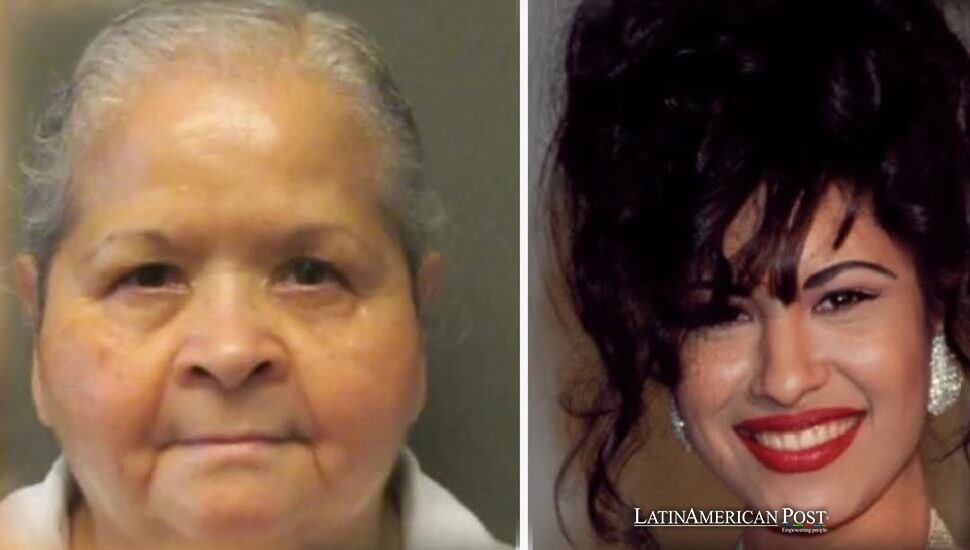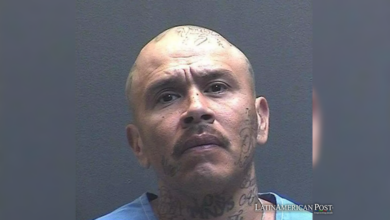Hispanic Icon Selena Quintanilla: Murderer Denied Parole In Texas

The woman who killed Tejano superstar Selena Quintanilla-Perez has been denied early release, extending an imprisonment that has lasted nearly three decades. As Selena’s legacy continues to inspire Hispanic communities worldwide, the sensational crime and its aftermath remain deeply resonant.
The Latest Parole Denial
A Texas parole board with three members denied early release again for Yolanda Saldívar. She serves a life sentence for the 1995 murder of the famous singer Selena Quintanilla-Perez.
Per state officials, Saldívar must wait until March 2030 for her next parole opportunity – a postponement that highlights the seriousness of her offense and shows the consistent public awareness of Selena’s story.
Saldívar, formerly the founder of Selena’s fan club and manager of the singer’s clothing boutiques, has served more than 28 years behind bars. She became eligible for parole after 30 years, but the possibility of her release was first considered in 2025 due to how Texas calculates prison time and parole review schedule. In rejecting her recent appeal, the Texas board stated that Saldívar still poses a danger to public safety and demonstrated “conscious disregard for the lives, safety, or property of others” with her actions.
The family of Selena stayed rather silent about the parole situation but her fans spoke. Especially through social media, they shared thoughts on Saldívar’s possible return. Many believe the crime showed planning also it was truly awful – considering her bond to Selena and the faith Selena had in her.
Reviewers insist Saldívar’s release at an early date, specifically before three decades pass, diminishes Selena’s effect on Tejano music. These individuals believe this action would lessen the importance of her role in Hispanic American society. The assigned jail term allows release consideration after thirty years – this caused disputes regarding justice plus compassion because of the case’s fame. For now, any potential release remains on hold, leaving many of Selena’s fans relieved that the woman responsible for taking the Tejano singer’s life will remain incarcerated.
The 1995 Murder That Shocked a Community
On 31 March 1995, Selena Quintanilla-Perez—already a superstar in the Tejano music scene—was gunned down in a Corpus Christi motel room. She was only 23 years old. Yolanda Saldívar, who had been confronted by Selena’s family about alleged embezzlement of fan club and boutique funds, met with Selena under the guise of handing over important business records. By all accounts, Selena intended to recover financial documents essential for tax purposes. Instead, the meeting escalated into a tragic confrontation.
Despite attempts by the young singer to flee, Saldívar fired a single bullet from a .38-caliber revolver, striking Selena in the back as she tried to run. Selena managed to make it to the hotel lobby, bleeding profusely. Sadly, she died soon after, and an entire community was plunged into grief.
The murder immediately captured national headlines, not least because Selena had been on the cusp of mainstream success in the United States. In an era when major labels were just beginning to pay attention to Spanish-language artists, Selena represented a game-changer. She had signed a crossover deal to record an English-language album, and her style—fusing Tejano, pop, and R&B—was winning her fans from all walks of life.
But for the Hispanic community, her death was more than a high-profile homicide. It was the loss of a cultural and linguistic bridge that managed to unite fans across generations and backgrounds. Selena was admired for her authenticity, her relatable nature, and the pride she took in her Mexican-American heritage. Many who grew up listening to Tejano in the 1980s and 1990s saw Selena as a beacon for greater recognition in the mainstream music landscape—a dream that was tragically cut short by a bullet from someone close to her.
After her death, the album *Dreaming of You* – her initial attempt at English pop – reached the top. This event established Selena as the first Tejano vocalist to start at the Billboard 200’s top spot. This posthumous success showed her missing future – it fueled anger toward Saldívar for ending a life filled with possible success.
Selena’s Enduring Legacy for Hispanic Communities
Selena still inspires people and remains beloved, especially by Hispanic people in Texas, the Southwest, and across the country, close to three decades after her murder. Her fame in Tejano music existed before, but her passing spread her recognition across the globe. For many Hispanic Americans, Selena turned into an emblem of two cultures – she had a command of English plus Spanish. Furthermore, she exhibited satisfaction with her Mexican background while in America.
Her impact moves past music. She showed one could be a global celebrity, yet keep the warmth, humility along with customs of their past. Her stage clothes often made by Selena, mixed modern fashion and Tejano style – a celebration of her origin and not a concealment. Selena became an ambassador for Hispanic arts plus culture in the U.S. – her style, good works along with big fan base helped do this.
After her passing people felt her impact in pop culture. The movie “Selena,” with Jennifer Lopez, granted Lopez her big chance plus aided the perpetuation of Selena’s musical legacy for a new generation. To theaters went fans who had never seen her perform live, gripped by a young Texan’s tale – her bilingual past mirrored their own. That movie presented Selena’s stage self and her personal story of family unity, driving next to the quest to create a space for Mexican-American artists in main entertainment.
Many tributes to Selena exist – wax figures appear in large museums, and street murals remain present in South Texas areas, while MAC Cosmetics lines take cues from her style. Younger people find her music on streaming places and witness the devotion of lifelong fans – and, on social media, Selena’s voice, fashion, and stage presence receive continued praise. This makes sure her memory does not fade. “The Queen of Tejano” remains a popular term, reflecting the respect she is given.
Murder, Justice, and the Future of Selena’s Story
Yolanda Saldívar’s life sentence was widely perceived as a measured form of justice when delivered in 1995. Yet every legal milestone—be it parole eligibility or formal reviews—has reignited discussions about accountability, forgiveness, and the appropriate punishment for a betrayal so harrowing. Saldívar’s request for early release in 2025 triggered fresh waves of anger among Selena’s fans. They regard her crime as murder plus as deep disloyalty to a tight group that accepted Saldívar into the singer’s work and private existence.
To many in the Hispanic community, the ongoing denial of parole has meaning. It highlights that the court structure understands the seriousness of Saldívar’s misdeed. Regardless of how Saldívar or her supporters argue about her potential rehabilitation, the public remains unsettled by the brutality and duplicity associated with Selena’s death. The courts have effectively determined that Saldívar cannot yet be safely reintegrated into society—and maybe won’t be for many more years.
From a wider view, the murder affected how artists, especially females, consider safety and risks in trusting bad people. Though Selena gained fame, nobody expected a betrayal from her friends. That betrayal caused a demand for more protection in the music business – particularly for new artists who have many fans.
Selena’s family manages her estate and keeps her name alive. To honor Selena, people host annual events like Fiesta de la Flor, which attracts thousands of fans. Merchandise lines, new album releases of remastered recordings, and tributes keep Selena’s essence in the cultural zeitgeist. Younger fans, perhaps only discovering her decades after her passing, find in Selena a role model for ambition and authenticity.
Regardless of future parole hearings, the intangible sentence for Saldívar is the weight of having killed a cultural icon. Selena’s supporters look to the horizon—both in sorrow over what was lost and in awe of what continues to bloom from her legacy. As young Hispanic girls watch her music videos or emulate her style, they inherit a sense of possibility she once championed. In that sense, Selena’s spirit remains victorious. Even with her killer confined, the “Queen of Tejano’s” fame becomes grander – evidence of her influence on music, cooperation next to optimism.
Also Read: Mexico Unveils Secrets: Cartels, Reforms, and Soccer Dreams
Selena’s account is a warning that honors their Hispanic background. The exhibit still highlights life’s fragile state and one performer’s power to move a large crowd. Yolanda Saldívar did not receive parole. It underlines a community’s decision to recall a tragic happening and its consequences. Selena’s vibrant character remains. Her lasting music, honest compassion, and steady pride in her heritage exist. They overcome sorrow and suggest the bright potential of a girl, and she reshaped Tejano music.





